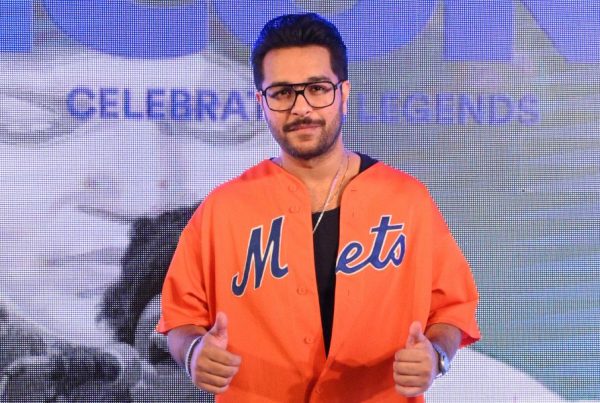With Ra.One, Shah Rukh Khan creates a fabulous new fusion of high-tech cinema for Bollywood.
“When did kings ever have to redeem themselves? It’s the upstarts who will always have to fight for the crown.â€
That’s just one of the many opinions that floated around on Twitter while Shah Rukh Khan’s Ra.One was releasing in India and simultaneously in Pakistan. Social networks were buzzing with opinions, some good and mostly bad. Even though people (fans and critics alike) were clamoring for tickets in Karachi, they were unsure of what to expect. Honestly speaking, most of them had prepared themselves to hate whatever Ra.One had to offer. But there was an incredible amount of curiosity as to what the film was all about.
Would Shah Rukh Khan be able to recover the estimated 145 crores he had invested in the film? Would he be able to redeem himself as King Khan, a spot that has been threatened by the Dabangg Bodyguard Salman Khan of late? Would his fans – majorly women and families – accept this new genre he was reinventing himself with? In a nutshell, would Ra.One, replete with its twenty five mega-brand endorsements and approximated 3500 VHX effects (more than James Cameron’s Avatar) impress his die-hard fans? Would it hard wire or short circuit in it’s opening?
Ra.One has come almost two years after SRK’s last (and hit) film, My Name is Khan but it cannot be compared to any of his previous films as it creates an absolutely new genre of cinema for India. Comparing it with any other film just makes it an unfair case of comparing apples and oranges.
This is science-fiction-super-hero thriller as has never been done before in India. It can be compared to Mr India, Drona and Krrish if push comes to shove but really, there is no similarity, especially when it comes to technical effects. And special effects are what the film rides on. What’s ironic is that despite the electronic surface, the film’s soul lies in emotions. The love Shahrukh Khan (and simultaneously his character) has for his son drives the story. The wired technical façade is in fact just that: a façade that camouflages a heart felt story.
Ra.One is the story of a bumbling South Indian scientist, Shekhar Subhramanium (Shah Rukh Khan) who develops a video game to please his typically difficult son. To win his son’s approval, the uncool and unpopular dad awards more powers to the villain, who ends up with invincible strength and who can change shape. So Ra.One takes on a will of his own (ala Frankenstein) and breaks out of his video-game mold, wreaking havoc wherever he goes. His goal is to terminate ‘Lucifer’ – the scientist’s son or his virtual identity to be exact – who once managed to crush him in an unprecedented three levels of the game. 
Arjun Rampal’s avatar as Ra.One comes a little late in the film but does full justice to the character. An unforgettable sequence is when he walks into Bombay on the eve of the Dussehra festival (when Hindus celebrate Ram’s victory over Ravana) and scoffs at a few gambling youths: “You wouldn’t be burning effigies of Ravana every year if you actually believed he was dead.â€
Back in the laboratory, the scientist creates Ra.One’s nemesis, G.One and fashions him to look like a younger, cooler version of himself. Shah Rukh Khan, packaged as a stronger and infinitely cooler G.One, is brought to life to combat and control Ra.One. The story hence unravels.
What doesn’t work in Ra.One
There isn’t much of a story, at least not one that isn’t predictable and clichéd. Don’t enter Ra.One expecting an intellectual reflection of The Dark Knight. Where the story is concerned, it plays more on the lines of ‘Raj meets Mr India’. It is simple and very much toes the line of a formula film.
Moreover, the first forty minutes of the film are wasted in explaining the concept of high power frequencies, invisible rays, holograms and cyberspace to what one can only assume to be an illiterate audience. For the rest of us, the inaugural forty-minute tutorial is tedious and unnecessary. Half an hour could have easily been skimmed off the film’s lengthy duration.
Finally, things aren’t so original in Ra.One. The film’s poster, for starters, is a throw back to Batman Begins (while you wish the story was!) and the HART (Hertz Advanced Resonance Transmitter) device that gives the automated characters their power is also reminiscent of Iron Man and his magnetic heart. The way Ra.One can change form is very Terminator. The way Ra.One reconstructs: also Terminator. At times it appears that all effects have been experienced before. What’s new is that they have never been experienced in an Indian film before.
What works in favour of Ra.One
Despite these flaws, what elevates the film is its Indian essence that creates a unique blend of high tech mixed with quintessential Bollywood masala.
It’s a film where a geeky scientist will and can jump into song and dance at the blink of an eyelid. It’s where a robot is programmed to perform the Bharatnatyam and can break into movement with ‘Chammak Chhallo. Emotions runs high at a death and the strongest form of expression is still a song. There is tragedy and there is heart-warming comedy as well. There is suspense and there is drama. You won’t find this anywhere in Hollywood, which is why Ra.One has to be appreciated for its unique take on technology. Shah Rukh Khan makes it work.
Talk about technology and there are effects that make you forget for a while that you are watching an Indian film. There’s the first encounter Ra.One has with G.One, where cars are sent flying in the air with the fluidity of a harmonious symphony. Then the way Ra.One reconstructs every time he is annihilated. The train sequence, where a heroine-gone-wild and is driving it to destruction, is countered by slick action. The action in this film is sublime and impressive. It has none of the clunkiness associated with former Indian super-hero flicks.
The soundtrack follows the same path of fusing electronics with Bollywood’s popular beats and is one of the strongest elements of the film after its special effects. Akon is on the play list with ‘Criminal’ and ‘Chammak Challo’ while Shafqat Amanat Ali croons to a remake of Ben E. King’s ‘Stand By Me’ with the heart tugging ‘Dildaara’. ‘Bhare Naina’ is just as poignant and emotional while the two high-tech tracks ‘Raftaarein’ and ‘Jiya Mora Ghabraye’ build up a lot of energy, giving us Hindi-techno. There’s fusion, even in the songs and not a single one of them bores.
Shah Rukh Khan has taken three loves of his life – his son, technology and Bollywood (there are cameos by Priyanka Chopra, Sanjay Dutt, Rajnikanth and a narration by Amitabh Bachchan) – and has assimilated them in this package of a blockbuster. Directed by the relatively green Anubhav Sinha, it may present itself as an unsavory khichri to some – as unappetizing as the spaghetti and curd Shekhar eats with his fingers. But to others it is just a juxtaposition of whatever made and still makes SRK films click. That humour, which critics refer to as infantile and at times puerile, is what people are laughing to. This is cinema fusion, for which you might have to wait to develop a liking for. And no matter who is on the credit roll for direction, we know who held the reigns throughout the making of this film.
Why SRK is still king
It isn’t every day that a film this groundbreaking is developed by an actor who would ideally be playing it safe to retain his position on the top of the charts. But 46-year old Khan risked a whole lot and more in Ra.One. And one can only appreciate his dedication and gutsiness.
While this may be another case of apples and oranges, one cannot help drawing comparisons to SRK’s efforts in making Ra.One with Shoaib Mansoor’s efforts in making Khuda Kay Liye and Bol. While SRK invested almost everything he had (finances and reputation) to project the Indian film industry at large, Mansoor cut down on the budget of two films that could have been technically much more sound than they actually were. Rumours are that the budgets were quite hefty, though of course no facts and figures were ever made official.
Mansoor himself emerged the hero of both his films – a brilliant and groundbreaking writer to touch upon such unspoken social issues – but his efforts have done nothing for reviving Pakistani cinema. And happy to settle with whatever came their way in terms of a good Pakistani film, critics overlooked the massive technical flaws in both production. They could have been filmed so much better.
Back to Ra.One, one doesn’t see how Bollywood’s first step into the sci-fi genre could have been better. Rajnikanth’s Robot doesn’t even come close, though unreasonable comparisons were being made prior to the film’s release. Krrish appears amateur in retrospect and Mr. India positively childish when it comes to effects, though no one can take away its iconic status. ‘Mogambo Khush Hua!’
Ra.One has upped the level of action for Bollywood. It has upped the marketing juggernaut ever associated with an Indian film by riding on twenty-five brands including Sony, with which has released an official Playstation 3 game. An approximated 60 crores was recovered in branding alone. In a nutshell, when it comes to Indian cinema, Ra.One has simply upped the game and when it comes to Sci-Fi thrillers, the game is definitely on.
Â







